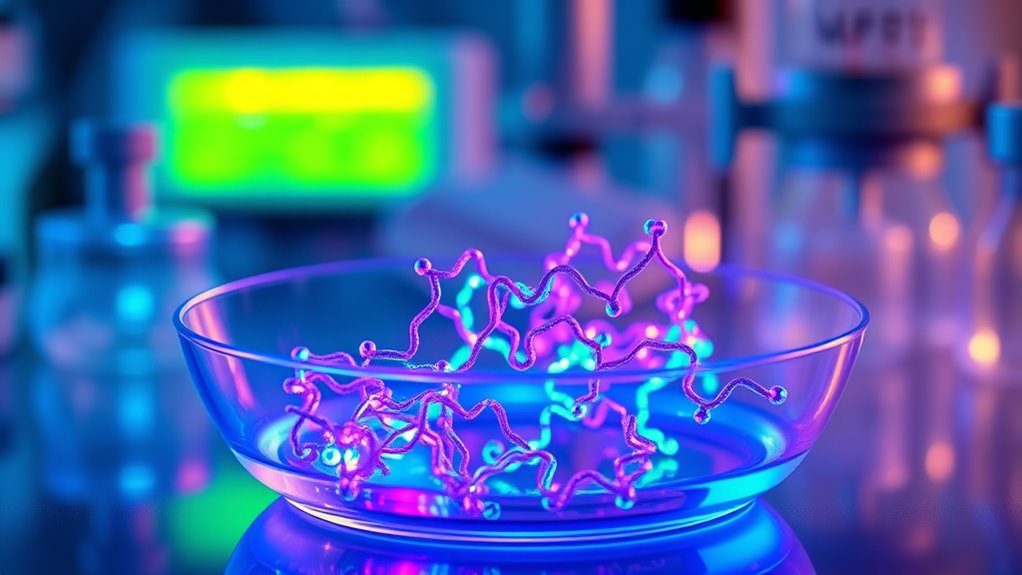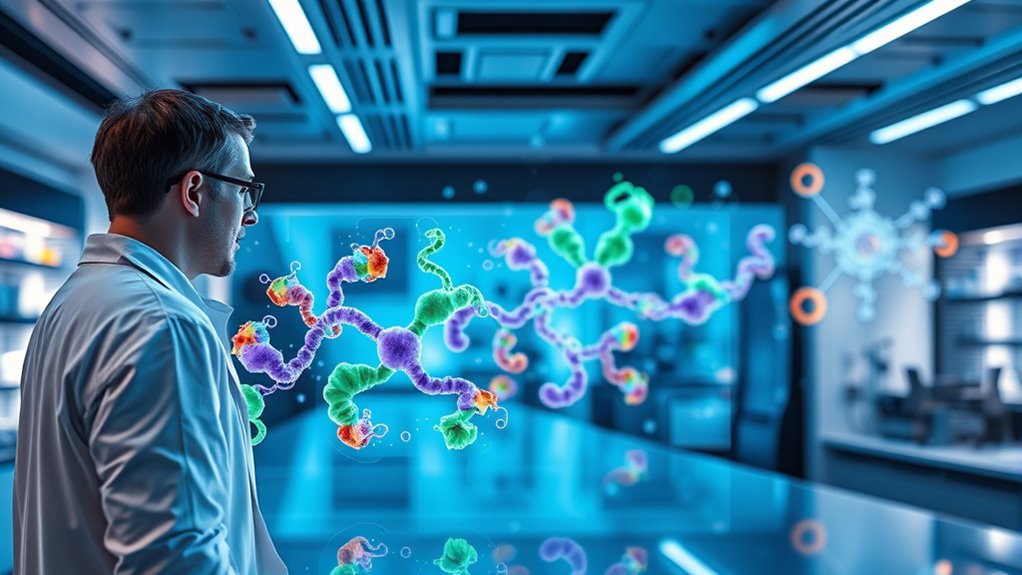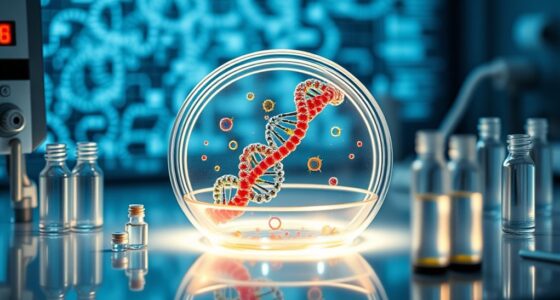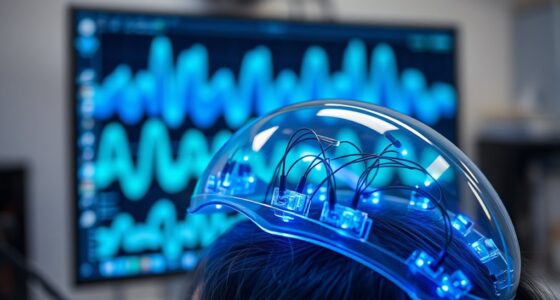Some experts argue that AI-generated proteins could revolutionize drug discovery, but it’s worth questioning how reliable these predictions truly are at this stage. If machine learning models can accurately forecast complex protein structures, the potential for faster, more targeted therapies grows markedly. However, uncertainties remain about their limitations and real-world applications. As you consider how this technology might reshape medicine, it’s important to explore both its promise and its challenges.
Key Takeaways
- AI accelerates protein shape prediction, enabling rapid identification of therapeutic candidates.
- Machine learning analyzes vast protein data, improving prediction accuracy for drug development.
- AI-designed proteins can be tailored for specific functions, advancing personalized medicine.
- Computational modeling reduces experimental costs, speeding up the discovery of effective drugs.
- Ongoing AI advancements open new possibilities for innovative proteins and treatments in medicine.

Have you ever wondered how artificial intelligence is transforming the way we discover new proteins? It’s an exciting frontier, especially with breakthroughs in understanding protein folding. Traditionally, figuring out how a protein folds into its functional shape was a painstaking process, involving trial and error or complex simulations. But now, machine learning models are revolutionizing this effort, enabling you to predict how proteins fold with remarkable speed and accuracy. These models analyze vast amounts of data from known protein structures, learning intricate patterns that help forecast how new sequences will fold. This leap accelerates the discovery process, allowing you to identify promising proteins for therapeutic use much faster than ever before.
AI accelerates protein discovery by predicting folding patterns with speed and precision.
The core of this transformation lies in machine learning algorithms that process data far beyond human capacity. They sift through millions of amino acid sequences and their known structures, recognizing subtle correlations that would be nearly impossible to detect manually. This capability means you can input a novel amino acid sequence and receive a reliable prediction of its three-dimensional shape. Efficient protein folding predictions are vital because the shape of a protein determines its function, stability, and interactions. When you understand these aspects quickly, you can design proteins tailored for specific purposes, such as targeted drugs or innovative therapies, greatly shortening the timeline from discovery to application.
Moreover, this AI-driven approach is breaking down previous barriers in drug discovery. Instead of relying solely on traditional lab work, you now have computational tools that can simulate how proteins behave in the body, predict their interactions with potential drugs, and identify candidates that might have been overlooked. This not only speeds up the process but also reduces costs and minimizes the reliance on trial-and-error in the lab. As machine learning continues to improve, your ability to generate new proteins with desired functions becomes increasingly precise. You can engineer proteins to target specific diseases, overcome resistance mechanisms, or deliver drugs more effectively.
In essence, machine learning is empowering you to explore the vast universe of proteins more thoroughly and efficiently. The capacity to predict protein folding accurately is just the beginning. As these AI systems evolve, they will enable you to design proteins with unprecedented color accuracy, opening new avenues in medicine, biotechnology, and beyond. This synergy between human ingenuity and machine intelligence is set to redefine what’s possible in drug discovery, making the development of life-saving therapies faster, smarter, and more effective than ever before.
Conclusion
AI-generated proteins are like a lightning bolt illuminating the path to faster drug discovery. By harnessing these advanced tools, you can navigate the complex landscape of medicine with greater speed and precision. This technological breakthrough transforms the way you approach disease treatment, making innovation feel almost within reach. As you embrace this frontier, remember you’re steering a powerful ship through uncharted waters—destined to uncover new horizons in health and healing.









